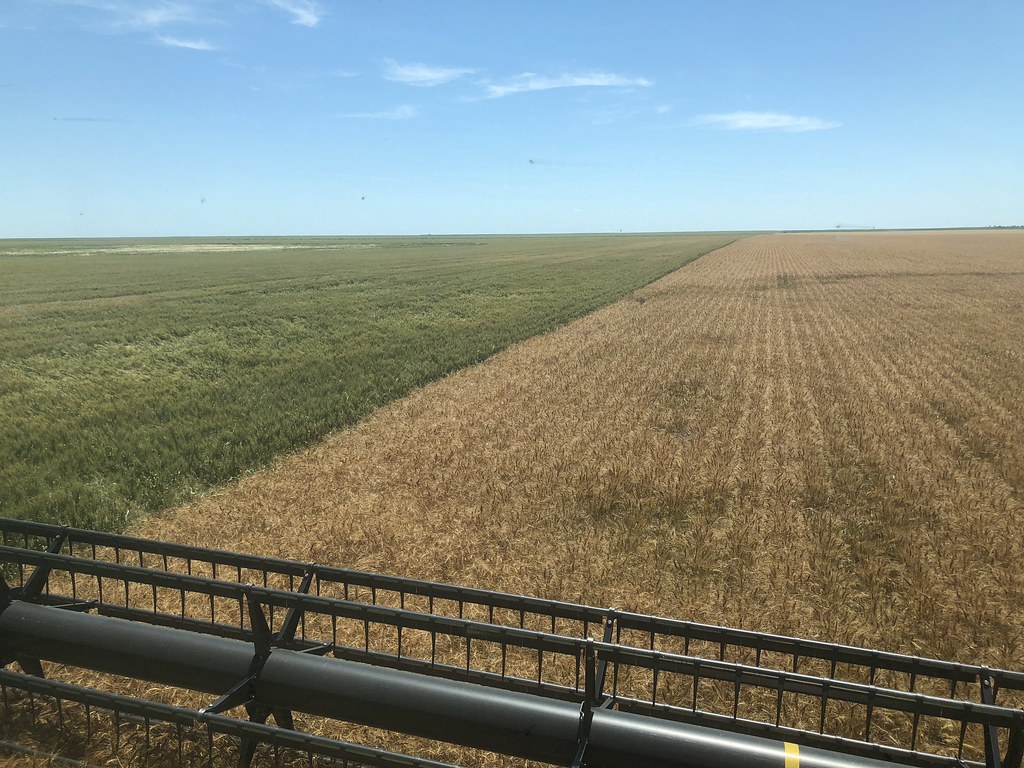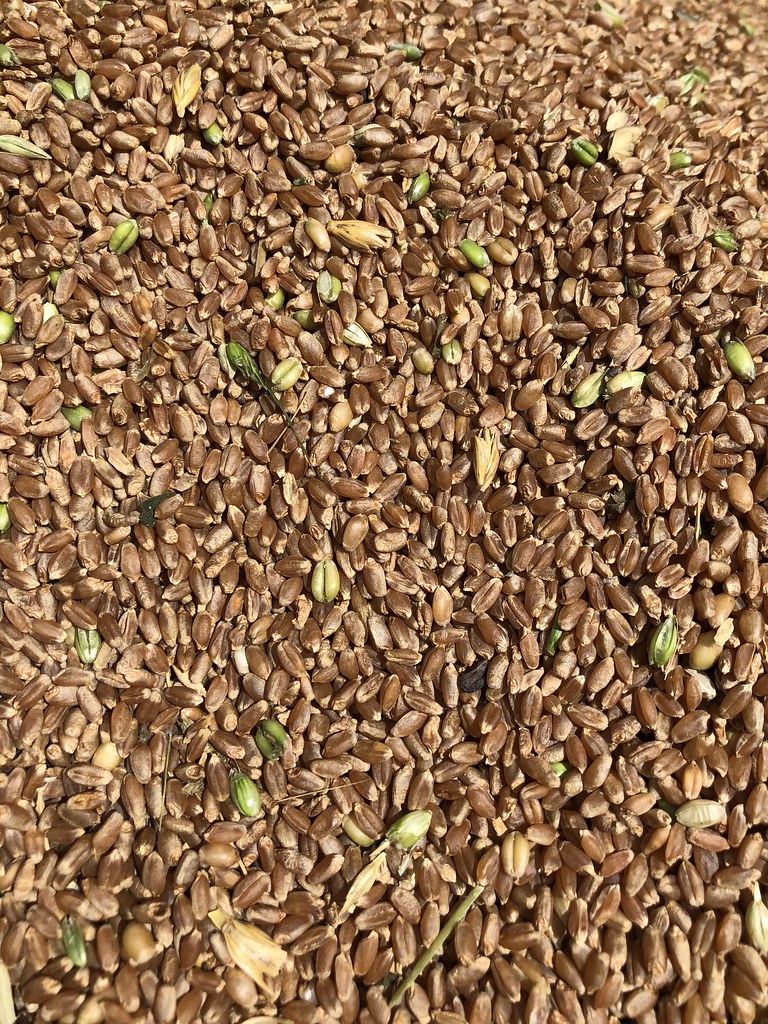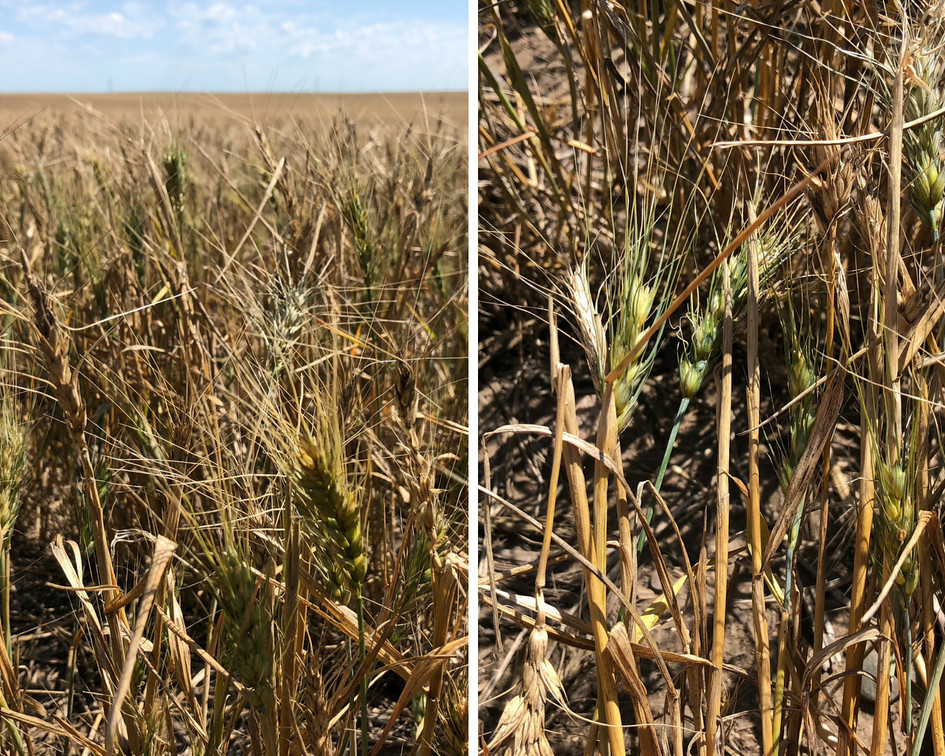03 Aug Brian: Shifting gears in South Dakota – Spring wheat harvest begins.
Click the video below to enjoy the scenic sites of winter wheat harvest in central South Dakota. Enjoy!!!
Three weeks after arriving in Onida, South Dakota, we are finally shifting gears….moving from winter wheat to spring wheat. No doubt you have noticed this year’s very unusual weather, and harvest in South Dakota has been unusual because of…you guessed it, the weather.
We often anticipate a South Dakota harvest to be hot, dry, and windy with long hours and weeks of uninterrupted harvesting. This year is the opposite. Cool weather has been the norm, replacing triple-digit heat with highs in the 70s. Small showers and notable rain events are frequent. Every morning a heavy dew sets, soaking the wheat crop and making for a late harvest start time, usually after lunch. With a low of 48° one morning we actually turned on the trailer house furnace. WHAT? Is this summer harvest or fall harvest? The cool days have made for enjoyable living weather, but it has created another problem…spring wheat that refuses to ripen.

Once we started harvesting winter wheat (right side of photo) we saw first hand just how green the spring was (left side of photo). Our suspension from the very beginning was correct…slow ripening spring wheat has delayed it’s harvesting substantially.
We anticipated spring wheat could harvest later than normal, due to late-season snows delaying seeding. But no one expected weather where 90° would be the exception rather than the norm. Some farmers have spring wheat exclusively, meaning there are crews that have been sitting idle for a full 30 days waiting for ripe spring wheat. That is not financially favorable. We all enjoy a little downtime, but it has been excessive.
Thankfully we have been able to move from winter to spring wheat with only a few days in between, but many of our fields in other areas of the county have problematic green heads scattered throughout. Part of the issue is the hail damage many fields received, causing injured plants to “pause” ripening while they attempted to regrow foliage enough to finish seed development. These late-ripening plants often are referred to as “sucker heads,” and they are causing real heartache. Fields are filled with ripe 13% moisture wheat and then scattered throughout are 20% moisture sucker heads. This makes it impossible to achieve the 14% moisture level considered safe for long-term storage.

Harvesting a sample of the spring wheat confirms what we expected all along…. Green plump berries from “sucker heads” are mixed in with dry kernels, leading to moisture levels still too high for safe long-term storage to avoid spoiling. So we sit and wait for warmer weather…
Thankfully the upcoming week finally sees a change in the weather, with 90° days appearing frequently. This is the weather needed to dry down these spring wheat fields quickly! Of course, the heat also introduces more chances of storms, so we will see how it plays out. Many farmers have begun spraying select spring wheat fields to kill the plants, artificially forcing dry down (an expensive but almost required alternative). Some fields may never be harvested dry with the volume of green sucker heads present without chemical application to kill the green wheat.

Here you can clearly see the green “sucker heads” mixed in with the dry wheat. There is an abnormally large number of “suckers” this year due to late seeding and hail damage.
At any rate, spring wheat harvest is on the verge of finally beginning in earnest here in the Onida area. That’s good because we expect our North Dakota acres to be ready to go the second week of August. That’s right around the corner. After all, the thought of moving to North Dakota makes us remember what comes afterward…moving HOME. It’s a little early to entertain that thought, but the end is sooner than we think. Suddenly I feel a little sad.
All Aboard Wheat Harvest is sponsored by High Plains Journal and John Deere. Brian can be reached at brian@allaboardharvest.com.

Sorry, the comment form is closed at this time.